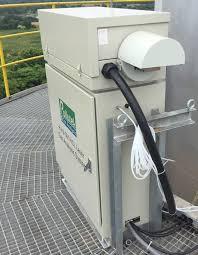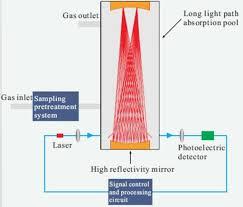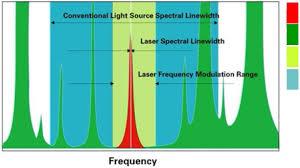Pollutek eLas-200 and eLas-300 CEMS 
eLAS-200 SM is the stack mount and compact version of the already well-known and successful floor standing eLAS-300 hot wet extractive laser analysis system.
The stack-mount version will be used when the available place for system installation is limited and if the nominal gas concentrations to measure are > 20 ppm.
Hot wet extractive Laser gas analysis system model eLAS-300 for continuous monitoring of HCL, HF, NH3 or NH3+H20 in CEMs applications
In all other cases, the floor standing eLAS-300 version will be preferred. eLAS-200SM is composed by 2 different cabinets:
• One stack-mount gas sampling and analysis cabinet designed for installation directly on the stack flange at the measurement point
• One wall-mount control cabinet to install nearby the analyser cabinet.

|
 |
The eLAS-200 SM implements the Tunable Diode Laser Absorption Spectroscopy (TDLAS) technology for achieving extremely high qualitative gas measurements. Laser Absorption Spectroscopy is a high resolution infrared technique enabling accurate measurements of specific gases while avoiding interferences that are common with traditional infrared detectors. It also offers very short response time (TD90) typically < 2 sec. No cross-sensitivity typical to NDIR detectors NDIR detectors select the appropriate wavelength

by filtering the light of a thermal emitter through an interference filter having a spectral resolution about 1000x weaker compared to the TDLS laser cell of the eLAS-200 SM having a capability to justify different absorption lines with a gap of 0.1 nm While the NDIR detector will be subject to cross-sensitivities when absorption bands of different gases overlap that will result in measurement errors, the TDLS cell will not suffer from cross-sensitivities,
especially when selecting a correct absorption line of the target gas that is about 10 times sharper than the absorption lines width of possible background gases. No interference from dust or moisture Better Long-Term Stability with Single-Channel cells |
|





